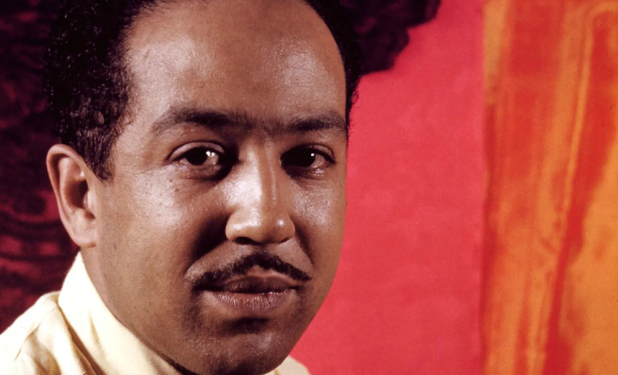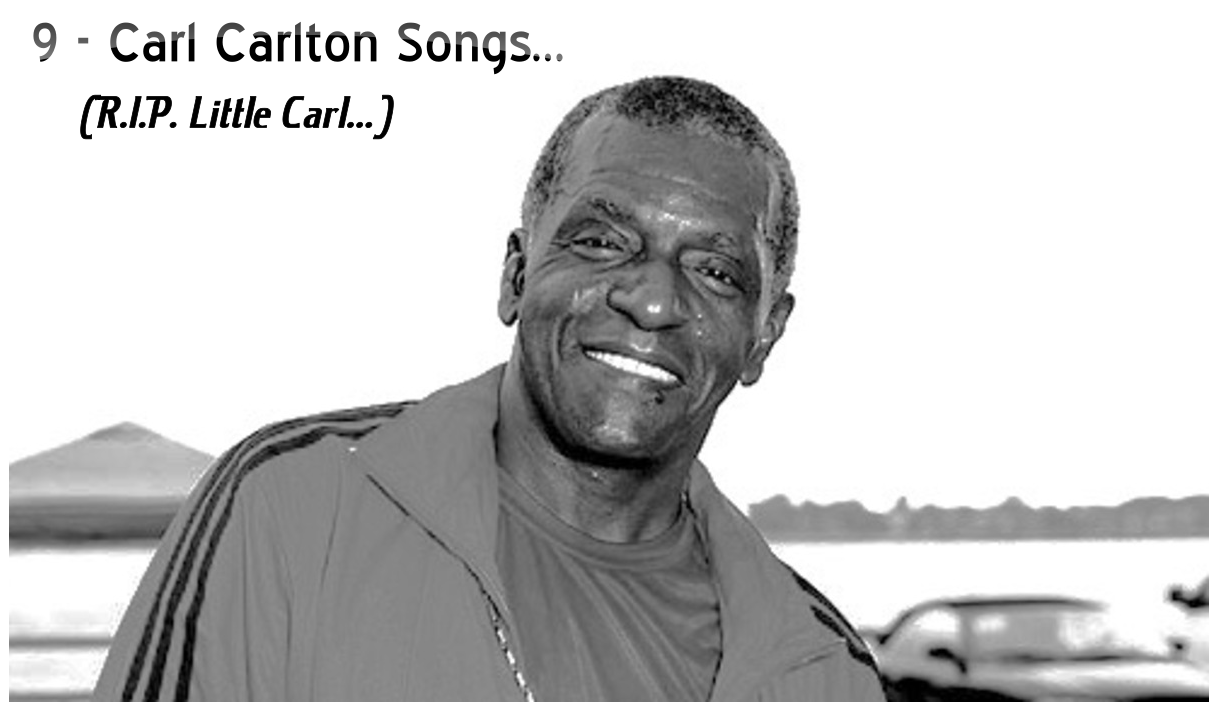(ThyBlackMan.com) Langston Hughes, one of the most significant figures in American literature, carved a niche for himself as a voice that resonated with the struggles, joys, and cultural ethos of African Americans. His poetry, often simple yet profoundly evocative, captures the essence of the African American experience and, by extension, the heart of America itself. Hughes’s work is a reflection of his time, his people, and his unwavering commitment to highlighting the nuances of black life in America. Here are ten of his most powerful poems that encapsulate the heart of America, each explored in detail to uncover the inspiration and impact behind them.

1. “The Negro Speaks of Rivers” (1921)
Inspiration and Themes: Hughes wrote “The Negro Speaks of Rivers” at the age of 17, during a train journey to visit his father in Mexico. As the train crossed the Mississippi River, Hughes was inspired by the sight of the water and its historical significance. The poem connects the flow of rivers to the flow of human history, particularly the history of African Americans. The rivers—Euphrates, Congo, Nile, and Mississippi—are symbols of the deep roots and enduring spirit of black people.
Analysis: In this poem, Hughes uses rivers as metaphors for the soul of African Americans, stretching back to the dawn of civilization. The poem’s lines “My soul has grown deep like the rivers” reflect a collective memory, steeped in ancient and profound experiences. The mention of the Mississippi links the historical context of slavery and freedom in America, especially with the reference to Abraham Lincoln. This poem captures the depth of the African American experience, tracing it back to the earliest civilizations, and highlighting a sense of pride and endurance.
2. “I, Too” (1926)
Inspiration and Themes: “I, Too” was written during the Harlem Renaissance, a time of burgeoning African American cultural and intellectual life. Hughes was inspired by Walt Whitman’s “I Hear America Singing,” but he sought to include the voices that Whitman had left out—those of black Americans. The poem is a response to the exclusion of African Americans from the American narrative.
Analysis: Hughes’s poem is a powerful assertion of black identity and equality. The narrator proclaims, “I, too, sing America,” insisting on his rightful place in the American fabric. The poem progresses from the pain of exclusion to the confident assertion that African Americans will be recognized as equals. The line “They’ll see how beautiful I am and be ashamed” reflects Hughes’s hope for a future where racial prejudices are overcome. “I, Too” captures the spirit of resilience and the unyielding quest for equality, a central theme in the African American struggle and, by extension, in the heart of America.
3. “Mother to Son” (1922)
Inspiration and Themes: “Mother to Son” was inspired by Hughes’s observations of the strength and resilience of black women, particularly his own mother and grandmother. The poem is a dramatic monologue that features a mother speaking to her son, using the metaphor of a staircase to describe the challenges and hardships of life.
Analysis: The mother’s advice to her son, “Life for me ain’t been no crystal stair,” is a poignant reminder of the difficulties faced by African Americans, especially women, in a society that often oppresses them. The staircase, with its tacks, splinters, and torn boards, symbolizes the obstacles that life presents. However, the mother’s resolve to keep climbing, despite the hardships, serves as an inspiration not only to her son but to all who face adversity. The poem resonates with the themes of perseverance and hope, embodying the spirit of endurance that is at the heart of the African American experience.
4. “Harlem” (1951)
Inspiration and Themes: “Harlem,” also known as “A Dream Deferred,” was written during a time when the post-World War II optimism of African Americans was met with ongoing racial discrimination and economic hardship. Hughes was inspired by the frustrations and unfulfilled aspirations of African Americans who moved to Harlem during the Great Migration, seeking better opportunities.
Analysis: The poem famously begins with the question, “What happens to a dream deferred?” Hughes explores the consequences of delayed dreams through a series of vivid and unsettling images, such as a raisin in the sun, a festering sore, and a heavy load. Each image suggests a different outcome, ranging from decay to explosion, symbolizing the potential consequences of prolonged racial injustice. “Harlem” captures the anger, frustration, and latent potential for rebellion among African Americans, reflecting the broader social and racial tensions in America.
5. “Let America Be America Again” (1936)
Inspiration and Themes: Hughes wrote “Let America Be America Again” during the Great Depression, a time of widespread economic hardship and social unrest. The poem reflects Hughes’s disillusionment with the American Dream, which he felt was unattainable for many, particularly African Americans, immigrants, and the working class.
Analysis: The poem is a critique of the idealized vision of America as a land of freedom and opportunity. Hughes contrasts this vision with the reality of oppression and exploitation faced by marginalized groups. The repeated line “America never was America to me” underscores the disparity between the American ideal and the lived experiences of those who are excluded from its promises. Despite this, the poem ends on a note of hope, calling for the realization of true equality and justice. “Let America Be America Again” resonates as both a critique and a call to action, urging America to live up to its founding ideals.
6. “The Weary Blues” (1925)
Inspiration and Themes: “The Weary Blues” was inspired by Hughes’s experiences in Harlem, where he was immersed in the vibrant culture of jazz and blues music. The poem captures the melancholy and resilience of African American life through the lens of a blues singer performing in a Harlem nightclub.
Analysis: Hughes’s use of rhythm and musicality in the poem reflects the influence of blues music. The poem’s narrator describes the singer’s performance with a blend of sorrow and resignation, “He made that poor piano moan with melody.” The blues singer’s lament, “I got the Weary Blues and I can’t be satisfied,” echoes the emotional weight carried by many African Americans facing systemic racism and economic hardship. “The Weary Blues” captures the deep emotional expression and cultural significance of the blues, a genre born out of the African American experience.
7. “Theme for English B” (1949)
Inspiration and Themes: “Theme for English B” was written during a time when racial segregation was still prevalent in America. Hughes, who was often the only black student in his classes during his college years, drew on his own experiences of being a minority in predominantly white academic spaces.
Analysis: The poem takes the form of an assignment, where the speaker, a black student, reflects on his identity and how it intersects with his experiences as an American. The speaker questions the notion of what is “true” for him, highlighting the complexities of race, identity, and individuality. The poem’s concluding lines, “You are white—yet a part of me, as I am a part of you. That’s American,” suggest that despite racial differences, there is an inextricable connection between all Americans. “Theme for English B” challenges the reader to consider the multiplicity of experiences that make up the American identity.
8. “Dream Variations” (1924)
Inspiration and Themes: “Dream Variations” reflects Hughes’s longing for freedom and equality in a racially divided America. The poem was inspired by the poet’s desire for a world where black people could live free from the constraints of racism and oppression.
Analysis: The poem is structured around two variations of the same dream, one of a day of freedom and one of a night of rest. In the first stanza, the speaker imagines a day of joy and dance under the sun, symbolizing liberation and the fulfillment of dreams. The second stanza, with its emphasis on the gentle night, represents peace and rest after the struggles of the day. The poem’s repetition of “Dark like me” underscores the speaker’s pride in his racial identity and his desire for a life where he can fully express himself. “Dream Variations” is a celebration of black identity and a hopeful vision for a future free from racial oppression.
9. “Freedom’s Plow” (1943)
Inspiration and Themes: “Freedom’s Plow” was written during World War II, a time when the ideals of freedom and democracy were being vigorously defended on the global stage. Hughes was inspired by the idea that America’s strength lay in its diversity and the collective efforts of all its people, particularly African Americans.
Analysis: The poem uses the metaphor of a plow to represent the hard work and perseverance required to achieve freedom and justice. Hughes traces the history of America from its founding to the present, emphasizing the contributions of black people and other marginalized groups. The repeated refrain, “Keep your hand on the plow! Hold on!” serves as a rallying cry for continued struggle and determination. “Freedom’s Plow” is a testament to the resilience and endurance of those who have fought for freedom and equality in America, and it calls for the realization of the nation’s democratic ideals.
10. “A Dream Deferred (Harlem)” (1951)
Inspiration and Themes: While “Harlem” is often discussed separately, it’s important to note that it’s part of a larger work titled “Montage of a Dream Deferred,” which includes several poems exploring the theme of deferred dreams. Hughes was inspired by the socio-economic conditions in Harlem during the post-World War II era, where African Americans continued to face significant challenges despite the promises of equality and opportunity.
Analysis: In “A Dream Deferred,” Hughes uses the metaphor of a dream being delayed or postponed to explore the impact of unfulfilled aspirations on individuals and communities. The series of rhetorical questions in the poem—”Does it dry up like a raisin in the sun? Or fester like a sore—And then run?”—vividly depicts the potential consequences of suppressing one’s dreams. Each simile and metaphor represents a different, often painful, outcome of deferred hope, whether it be decay, anger, or explosion. The poem’s conclusion, “Or does it explode?” suggests that prolonged injustice and unmet expectations can lead to explosive consequences, reflecting the simmering tensions in Harlem and other black communities at the time.
“A Dream Deferred” serves as a powerful commentary on the broader African American experience, where dreams of equality and prosperity were repeatedly deferred by systemic racism and social barriers. The poem’s enduring relevance speaks to the ongoing struggle for civil rights and justice in America.
Langston Hughes’s poetry is a rich tapestry of the African American experience, woven with threads of pain, hope, resilience, and an unwavering demand for justice. Through these ten poems, Hughes captures the heart of America by highlighting both its ideals and its contradictions. His work challenges readers to confront the realities of racial injustice while also offering a vision of hope and perseverance.
Hughes’s ability to speak to the experiences of African Americans, while also addressing universal themes of freedom, equality, and human dignity, makes his work timeless. Each poem discussed here not only reflects the historical and social context in which it was written but also resonates with contemporary struggles for justice and equality. Hughes’s legacy as a poet lies in his capacity to capture the soul of a nation and to give voice to those who have been silenced. Through his words, he continues to inspire and challenge readers to work towards a more just and inclusive America.
Staff Writer; Jamar Jackson
This brother has a passion for poetry and music. One may contact him at; JJackson@ThyBlackMan.com.

















Great post! Hughes’ poems are a powerful reflection of American culture and resilience. These picks are spot-on for defining the spirit.